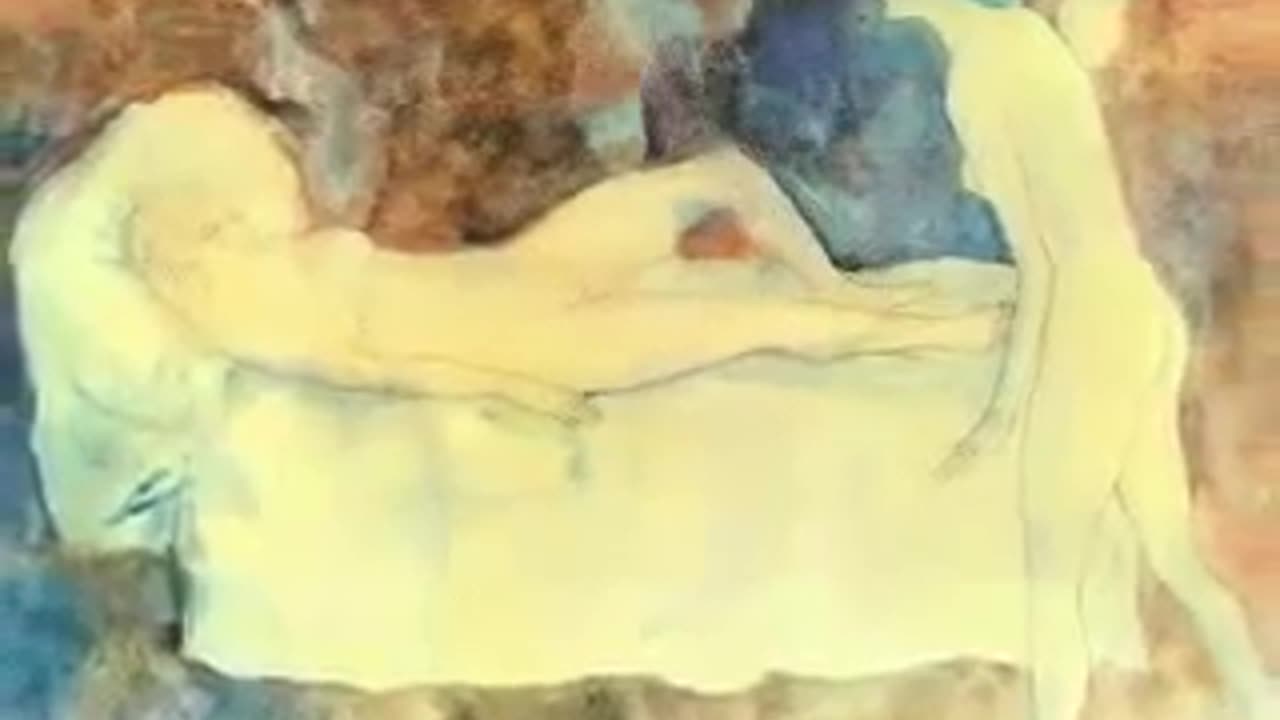Premium Only Content

Discover the striking art produced by Pablo Picasso during his Blue Period in 1904
PICASSO 1904
The Blue Period (Spanish: Periodo Azul) is a term used to define to the works produced by Spanish painter Pablo Picasso between 1901 and 1904, when he painted essentially monochromatic paintings in shades of blue and blue-green, only occasionally warmed by other colors. These somber works, inspired by Spain and painted in Barcelona and Paris, are now some of his most popular works, although he had difficulty selling them at the time.
This period's starting point is uncertain; it may have begun in Spain in the spring of 1901, or in Paris in the second half of the year. In choosing austere color and sometimes doleful subject—prostitutes, beggars and drunks are frequent subjects—Picasso was influenced by a journey through Spain and by the suicide of his friend Carlos Casagemas, who took his life at the L'Hippodrome Café in Paris, France by shooting himself in the right temple on February 17, 1901. Although Picasso himself later recalled, "I started painting in blue when I learned of Casagemas's death", art historian Hélène Seckel has written: "While we might be right to retain this psychologizing justification, we ought not lose sight of the chronology of events: Picasso was not there when Casagemas committed suicide in Paris ... When Picasso returned to Paris in May, he stayed in the studio of his departed friend, where he worked for several more weeks to prepare his exhibition for Vollard". The works Picasso painted for his show at Ambroise Vollard's gallery that summer were generally characterized by a "dazzling palette and exuberant subject". Picasso's psychological state worsened as 1901 continued.
In the latter part of 1901, Picasso sank into a severe depression, and blue tones began to dominate his paintings. Picasso's painting La mort de Casagemas, completed early in the year following his friend's suicide, was done in hot, bright hues. The painting considered the first of his Blue Period, Casagemas in His Coffin, was completed later in 1901 when Picasso was sinking into a major depression. Picasso, normally an outgoing socializer, withdrew from his friends. Picasso's bout of depression was to last several years. Although his career had been promising before 1901, and early in the year he was making "a splash" in Paris, as he moved towards subject such as the poor and the outcast of society, and emphasized a cool, anguished mood with blue hues, the critics and the public turned away from his works. Members of the public were uninterested in displaying the Blue Period works in their homes. Picasso continued his output, but his financial situation suffered:
His pictures, not merely melancholy but profoundly depressed and cheerless, inspired no affection in the public or in buyers. It was not poverty that led him to paint the impoverished outsiders of society, but rather the fact that he painted them that made him poor himself.
From 1901 to 1903, he painted several posthumous portraits of Casagemas, culminating in the gloomy allegorical painting La Vie, painted in 1903 and now in the Cleveland Museum of Art. The same mood pervades the well-known etching The Frugal Repast (1904), which depicts a blind man and a sighted woman, both emaciated, seated at a nearly bare table. Blindness is a recurrent theme in Picasso's works of this period, also represented in The Blindman's Meal (1903, the Metropolitan Museum of Art) and in the portrait of Celestina (1903).
Other frequent subjects include female nudes and mothers with children. Solitary figures dominate his Blue Period works. Themes of loneliness, poverty and despair pervade the works as well. Possibly his most well known work from this period is The Old Guitarist. Other major works include Portrait of Soler (1903) and Las dos hermanas (1904).
Picasso's Blue Period was followed by his Rose Period. Picasso's bout with depression gradually ended, and as his psychological state improved, he moved towards more joyful, vibrant works, and emphasized the use of pinks ("rose" in French) and other warm hues to express the shift in mood and subject.
--------------------------------------------------------------------------------------------------------------
Looking for some inspiration in the fine arts department? Check out the Fine Art Connection YouTube channel! Here you can find a vast array of videos focusing on many different styles and mediums of artwork. This channel is great for art lovers and aspiring artists alike who want to learn more about the world of fine art. So go ahead and hit that subscribe button to stay connected to the ever-expanding world of fine art!
♾️ Facebook (Art Page):
https://tinyurl.com/FineArtConnection
🐦 Twitter (Follow Back):
https://tinyurl.com/FineArtBiz-tweet
🖼️ Instagram:
https://tinyurl.com/FineArtIG
_______________________________________
🪙 Bitcoin:
39hdEcuvXTeNtXuQ9f8ovkNqcLw4Xitqkm
🪙 ETH:
0xC967EFC61B929ecd29075ee172C39A95001d51B2
🐶 DOGE:
DAGTRTrAS7MLRMdhhRjhTZru8SzT6a2ydw
-
 1:30
1:30
Fine Art Connection
1 day agoHistorian and author Rosie Harte will enlighten about one of the most iconic ensembles collections.
11 -
 1:44:47
1:44:47
Russell Brand
3 hours agoDigital Censorship & Political Warfare: X Attacked, Rand Paul Rebels, Free Speech on Trial – SF551
85K16 -
 LIVE
LIVE
tastylive
2 hours agoLIVE Stocks, Options & Futures Trading with the Pros! (Market Open -> Close & More) March 11th, 2025
167 watching -
 1:35:59
1:35:59
Simply Bitcoin
3 hours ago $1.31 earnedTrumps Bitcoin Embrace TERRIFIES The EU | EP 1200
17.6K3 -
 2:00:05
2:00:05
The Charlie Kirk Show
3 hours agoThe Left Regroups + Deporting Hamas Lovers + Love Is Blind? | Rep. Donalds, Dr. Arnn | 3.11.25
78.5K8 -
 30:41
30:41
BonginoReport
22 hours agoTrump Pulls Ultimate Uno Reverse Card On Illegals (Ep.1) - 03/10/2025
120K510 -
 34:53
34:53
Grant Stinchfield
21 hours ago $2.51 earnedDoctored Photos and Phony Stats, How The Media is Weaponizing the Measles... Again!
27.3K5 -
 1:08:03
1:08:03
TheAlecLaceShow
3 hours agoGuests: Senator Bernie Moreno & Anne Fundner | Trump Calls For Massie Primary | The Alec Lace Show
11.2K -
 55:34
55:34
The Dan Bongino Show
6 hours agoThe Deep State Purge Intensifies (Ep. 2439) - 03/11/2025
633K850 -
 1:07:13
1:07:13
The Rubin Report
4 hours agoListen to ‘The View’ Crowd Gasp as Whoopi Goes Against Common Sense
59.1K43